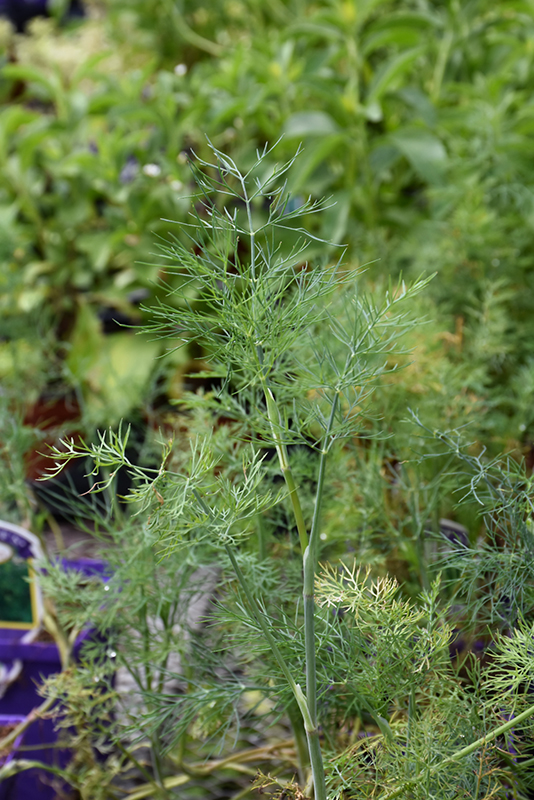Height: 3 feet
Spread: 12 inches
Sunlight:
![]()
Hardiness Zone: (annual)
Description:
An aromatic and tasty variety grown for both ornamental and edible qualities; yellow lacecap flowers hover over fine, lacy, aromatic foliage; a nice accent for the garden and great for containers; a great choice for drying, seasoning and pickling
Edible Qualities
Bouquet Dill is an annual herb that is commonly grown for its edible qualities. The entire above-ground parts of the plant are edible, and are typically harvested when mature. The edible parts have a distinctive taste and a light fragrance.
The plant is most often used in the following ways:
- Cooking
- Drying
- Pickling
- Seasoning
Planting & Growing
Bouquet Dill will grow to be about 3 feet tall at maturity, with a spread of 12 inches. Its foliage tends to remain dense right to the ground, not requiring facer plants in front. This fast-growing annual will normally live for one full growing season, needing replacement the following year. However, this species tends to self-seed and may thereby endure for years in the garden if allowed.
This plant is typically grown in a designated herb garden. It should only be grown in full sunlight. It does best in average to evenly moist conditions, but will not tolerate standing water. This plant does not require much in the way of fertilizing once established. It is not particular as to soil pH, but grows best in rich soils. It is somewhat tolerant of urban pollution. This is a selected variety of a species not originally from North America.
Bouquet Dill is a good choice for the edible garden, but it is also well-suited for use in outdoor pots and containers. With its upright habit of growth, it is best suited for use as a 'thriller' in the 'spiller-thriller-filler' container combination; plant it near the center of the pot, surrounded by smaller plants and those that spill over the edges. Note that when growing plants in outdoor containers and baskets, they may require more frequent waterings than they would in the yard or garden.
